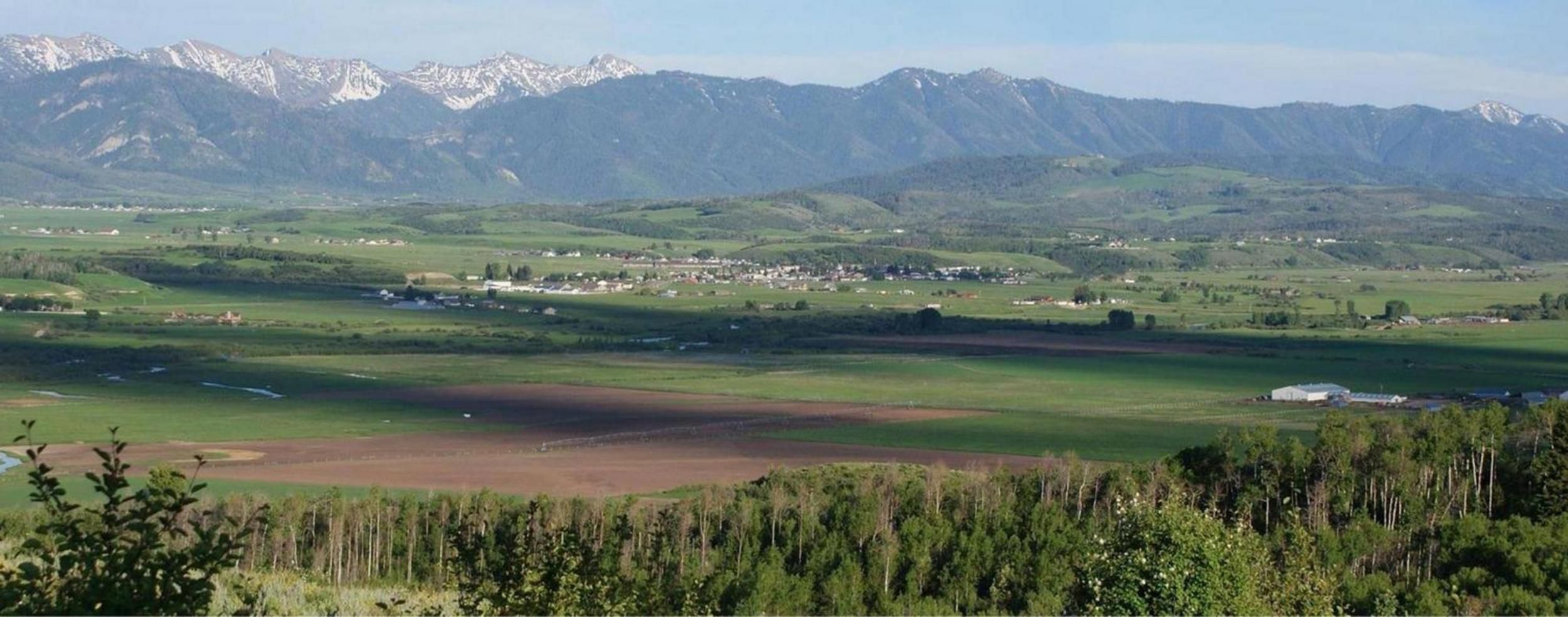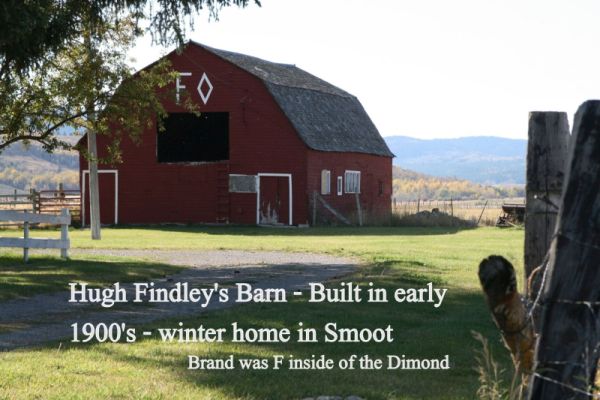Bloomington

The widow Merinda Campbell and her sons, David and Warren, Mr. and Mrs. John Barker Dunn, with their nephew, James Dunn, and three daughters, Charlotte Ann, Harriet Amelia, and Pamela (Millie), were the first to arrive in Bloomington on April 18, 1864, from Providence, Utah, via the meandering route through the Gentle Valley and Soda Springs. A large group of other settlers, the families of James W. Wilker, Peter Greenhalgh, Issac Dunford, John J. McCaray, William Hulme, David B. Dille, Nathaniel Haws, Soren Nelson, Nels Christian Nelson, Arnold Goodlife, James C. Thomas, Samuel Payne, Jonathan Huckvale, David Evans, Lotwick Reese, David Roberts, James H. Hart, George Osmond, Edward M Patterson and the Roger Brothers, joined them while the first group was still living in their wagons.
The first cabin was built by John Dunn and Warren Campbell. By the end of the summer there were 40 more cabins built.
Charles C. Rich and his son, Joseph, laid out the town, and men drew lots for them. The grasshoppers, ground squirrels, and frost destroyed everything in the first three
years, which caused many of the original families to leave after the third year. Others grabbed their land and eked out a meager living with some of the men working in Utah in order to survive. By the fourth year, the crops were large, and Apostle Rich said that Bloomington looked like the most productive land in the valley; that's why he suggested they name the town Bloomington.
Bloomington was incorporated on April 12, 19IO. E. J. Haddock, O. C. Dunford, Alfred Hart, Samuel Payne, and D. A. Krogue were on the first board.
 Bloomington had many firsts; It was the first town to have a building made just for a school. It was a 16'X20' structure. The floor and roof were made of split logs. The split logs on the roof were filled in with willow rushes and sod. There was a large fireplace at one end. For light, oiled paper was used to cover three windows on each side. The two rooms were divided by a muslin sheet. There was a small back room for the teacher's living quarters. George Osmond and James H. Hart were the teachers.
Bloomington had many firsts; It was the first town to have a building made just for a school. It was a 16'X20' structure. The floor and roof were made of split logs. The split logs on the roof were filled in with willow rushes and sod. There was a large fireplace at one end. For light, oiled paper was used to cover three windows on each side. The two rooms were divided by a muslin sheet. There was a small back room for the teacher's living quarters. George Osmond and James H. Hart were the teachers.
Bloomington had the first post office on the Idaho side of the valley. William Hulme was the first postmaster. Mail was hauled into the valley from Franklin County via Bloomington Canyon by men carrying it on snowshoes. Carriers from the Franklin side would carry the mail to the top of the mountain, and those from Bear Lake brought it to Bloomington. One of those first Bear Lake carriers, Edward M. Patterson is said to have made 13 trips during the winter of 1866-67.
The first telegraph wire into the valley followed the old Indian trail (Washakie Trail) to Bloomington Canyon and followed "Telegraph Hollow" for three and one-half miles into Paris.
The first presiding elder in the community was David B. Dille. The Bloomington Ward was organized with William Hulme being called as the first bishop. George Osmond also served as bishop in Bloomington for several years, and later was chosen second counselor to Pres. William Budge of the Bear Lake Stake. He also served as justice of the peace, probate judge, schoolteacher, stake Sunday School superintendent and school superintendent in Bear Lake County. He published the first newspaper in the valley, "The Democrat."
John Barker Dunn, who built the first cabin in Bloomington, was an avid hunter and fisherman. In his diary he said that in 1864 he caught a 13-pound trout in Bloomington Creek. With a 140'seine and a boat he pulled 80 large trout and a few other fish at the landing near the mouth of Swan Creek. He was sending fish to Cache Valley, Brigham City, Plain City and Salt Lake City. He said he could average four trapped beavers every day, but four head of elk or nine deer were all that he could shoot in one day. He said, "In the forepart of the winter of 1886, I bagged 56 deer. I killed 109 bears in my time and trapped a Silver Tip [grizzly] in Georgetown Canyon. Its hide measured 10 feet in length and 23 gallons of oil were taken from this animal." He later moved to Bennington and opened a very popular dancing school.
Resources:
- Incorporation – J. Patrick Wilde, Treasured Tidbits of Time, Vol. 1 p. 14
- School - Wilde Vol. 1 p. 13
- Telegraph - Land of the Sky Blue Water, by Dr. Russell R. Rich p. 84
- Mail - Land of the Sky Blue Water p. 80
- Post Office - Wilde Vol. 1 p. 14
- George Osmond - DUP Photo History & History of BL Pioneers p. 539
- John Dunn - DUP History of Bear Lake Pioneers p. 200
